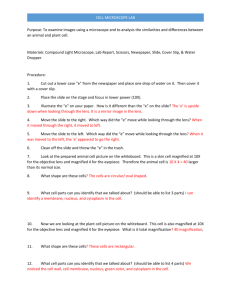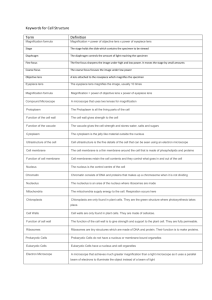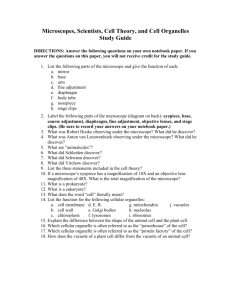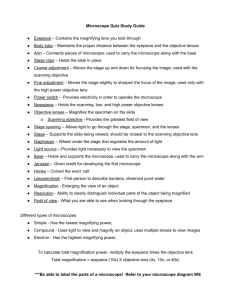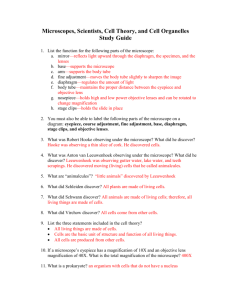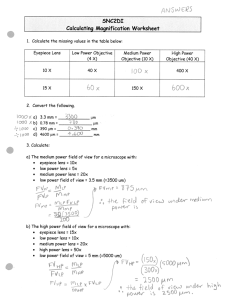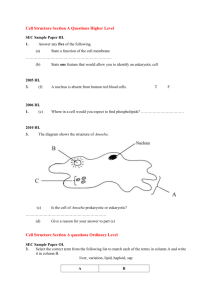Q. What cellular organelle is the site of energy release?
advertisement
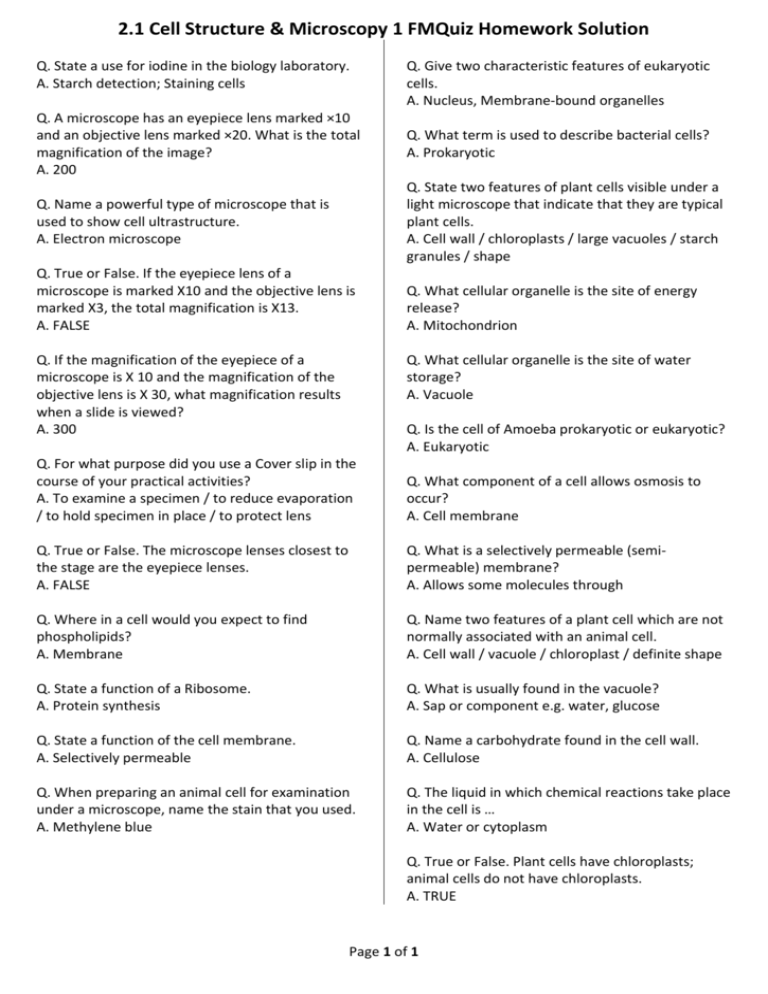
2.1 Cell Structure & Microscopy 1 FMQuiz Homework Solution Q. State a use for iodine in the biology laboratory. A. Starch detection; Staining cells Q. Give two characteristic features of eukaryotic cells. A. Nucleus, Membrane-bound organelles Q. A microscope has an eyepiece lens marked ×10 and an objective lens marked ×20. What is the total magnification of the image? A. 200 Q. What term is used to describe bacterial cells? A. Prokaryotic Q. Name a powerful type of microscope that is used to show cell ultrastructure. A. Electron microscope Q. State two features of plant cells visible under a light microscope that indicate that they are typical plant cells. A. Cell wall / chloroplasts / large vacuoles / starch granules / shape Q. True or False. If the eyepiece lens of a microscope is marked X10 and the objective lens is marked X3, the total magnification is X13. A. FALSE Q. If the magnification of the eyepiece of a microscope is X 10 and the magnification of the objective lens is X 30, what magnification results when a slide is viewed? A. 300 Q. What cellular organelle is the site of energy release? A. Mitochondrion Q. What cellular organelle is the site of water storage? A. Vacuole Q. Is the cell of Amoeba prokaryotic or eukaryotic? A. Eukaryotic Q. For what purpose did you use a Cover slip in the course of your practical activities? A. To examine a specimen / to reduce evaporation / to hold specimen in place / to protect lens Q. What component of a cell allows osmosis to occur? A. Cell membrane Q. True or False. The microscope lenses closest to the stage are the eyepiece lenses. A. FALSE Q. What is a selectively permeable (semipermeable) membrane? A. Allows some molecules through Q. Where in a cell would you expect to find phospholipids? A. Membrane Q. Name two features of a plant cell which are not normally associated with an animal cell. A. Cell wall / vacuole / chloroplast / definite shape Q. State a function of a Ribosome. A. Protein synthesis Q. What is usually found in the vacuole? A. Sap or component e.g. water, glucose Q. State a function of the cell membrane. A. Selectively permeable Q. Name a carbohydrate found in the cell wall. A. Cellulose Q. When preparing an animal cell for examination under a microscope, name the stain that you used. A. Methylene blue Q. The liquid in which chemical reactions take place in the cell is … A. Water or cytoplasm Q. True or False. Plant cells have chloroplasts; animal cells do not have chloroplasts. A. TRUE Page 1 of 1


